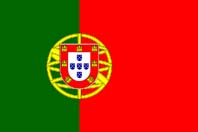Algarve Portugal
Guide to the Algarve region of Portugal, a popular holiday destination.
The Algarve Portugal - Information - History - Map - Weather
The Algarve Portugal - By far the most popular tourist area in Portugal, and the most southerly region of the country, The Algarve covers an area of some 5,412 square kilometres and has a resident population of about 410,000, spread amongst its 16 municipalities.
Stretching along a coastline of about 150 kilometres, the Algarve extends from the border with Spain at Vila Real de Santo Antonio (on the Guadiana River) to the windswept Ponta de Sagres peninsular (the most westerly point of mainland Europe). For the tourist it is a paradise, packed with hundreds of sandy beaches and coves, dotted with historic towns and villages and basking in a wonderful year round climate, with sunny, hot summers and mild pleasant winters (winter temperatures rarely fall below zero).
The largest city and capital of the Algarve region is Faro, this is also the main arrival point for the majority of visitors to the area, being the location of the International Airport. The busiest stretch of coastline, with the main tourist resorts, lies west of Faro, extending to Lagos, this rugged coastline attracts many thousands of visitors all year round, but especially during the summer season between May and October.
The history of the Algarve is hidden in the mists of time but there were known to have been settlements as long ago as 8,000 BC, one of the earliest being at Tavira, which was established as a trading port by the Phoenicians. The Carthaginians founded Portus Hannibalis (Portimao) in around 550 BC and at about the same time the Romans arrived in the region, building fortified settlements, roads, Roman Baths and fish salting factories.
After the decline of the Roman Empire the Visigoths filled the void, until over run by the Moors in the 8th century (711). Under the Moors the region became known as Al-Gharb ("the west"), Faro, previously called Santa Maria, became Faraon and Lagos, Zawaia. The Moors remained in control of the Algarve region until the mid-12th century, when it finally reconquered for the Christians, although further conflict continued into the 13th century.
During the 15th century the great Henry the Navigator was based near Lagos, and from here conducted many voyages, which established Portugal as a colonial power, resulting in a period of wealth and prosperity for both the Algarve and Portugal in general.
The explosion of tourism in the Algarve, began in the 1960's, with Britain, Ireland, Germany and Holland providing the large majority of visitors. Its superb beaches, easy access and wonderful climate being the major draws, together with its excellent golfing and sports facilities.
Previous to tourism, fishing was historically the main industry, and seafood still forms the basis of the region's gastronomy, while agriculture has also been very important, among its main products - oranges, almonds, figs, carob bean and cork oak.
Algarve Links: Algarve Map - Algarve Weather
Algarve Places: Albufeira - Portimao - Alvor - Tavira - Vilamoura - Faro - Praia da Rocha - Lagos - Carvoeiro - Sagres - Praia da Luz - Silves - Luz
Algarve Hotels: Aparthotel Albufeira
Portugal Places: Coimbra - Leiria - Lisbon
More Info: Algarve Weather Forecast
Related: The Douro River - The Algarve - Travel Articles - Other Places - Builders
HOME
